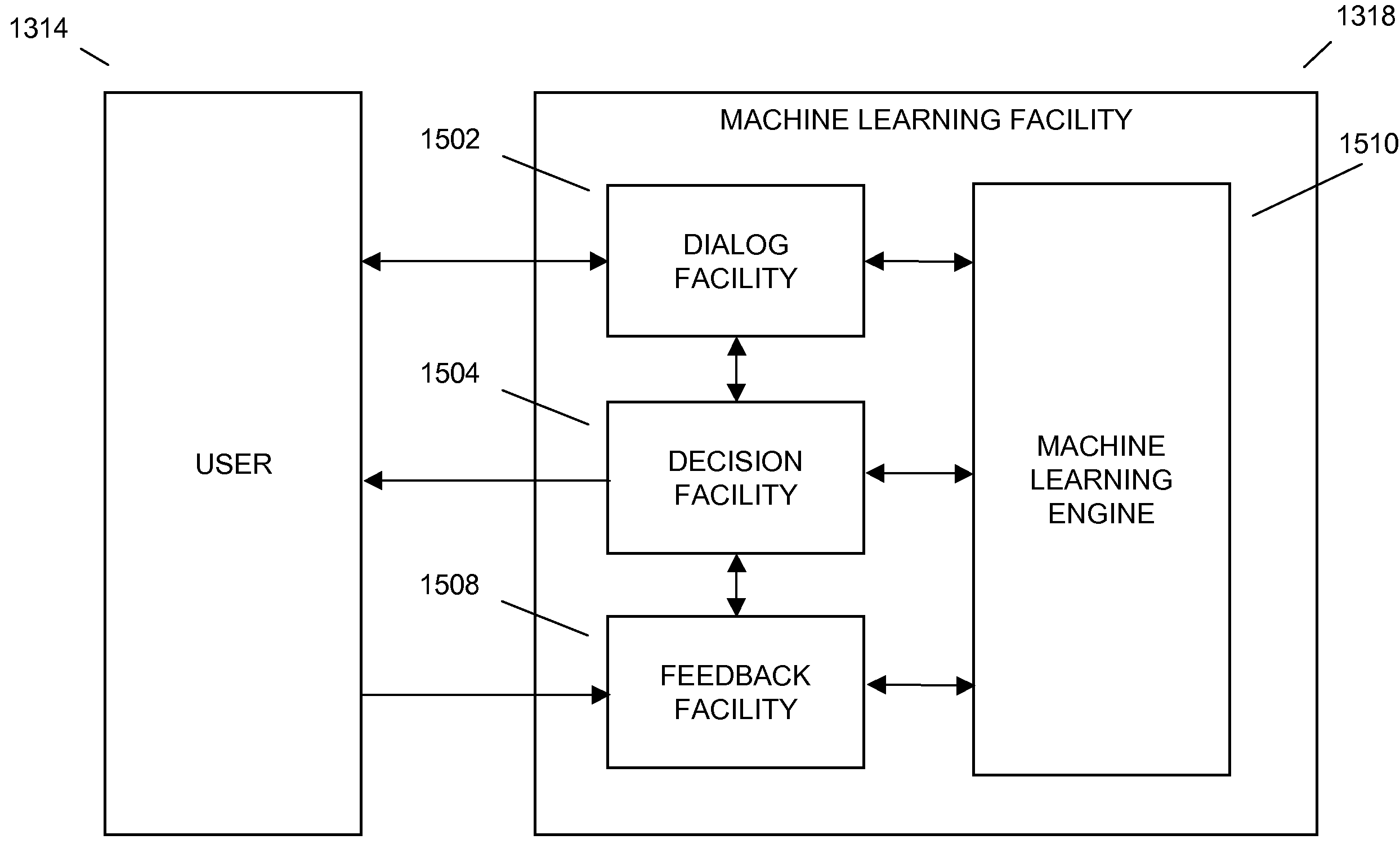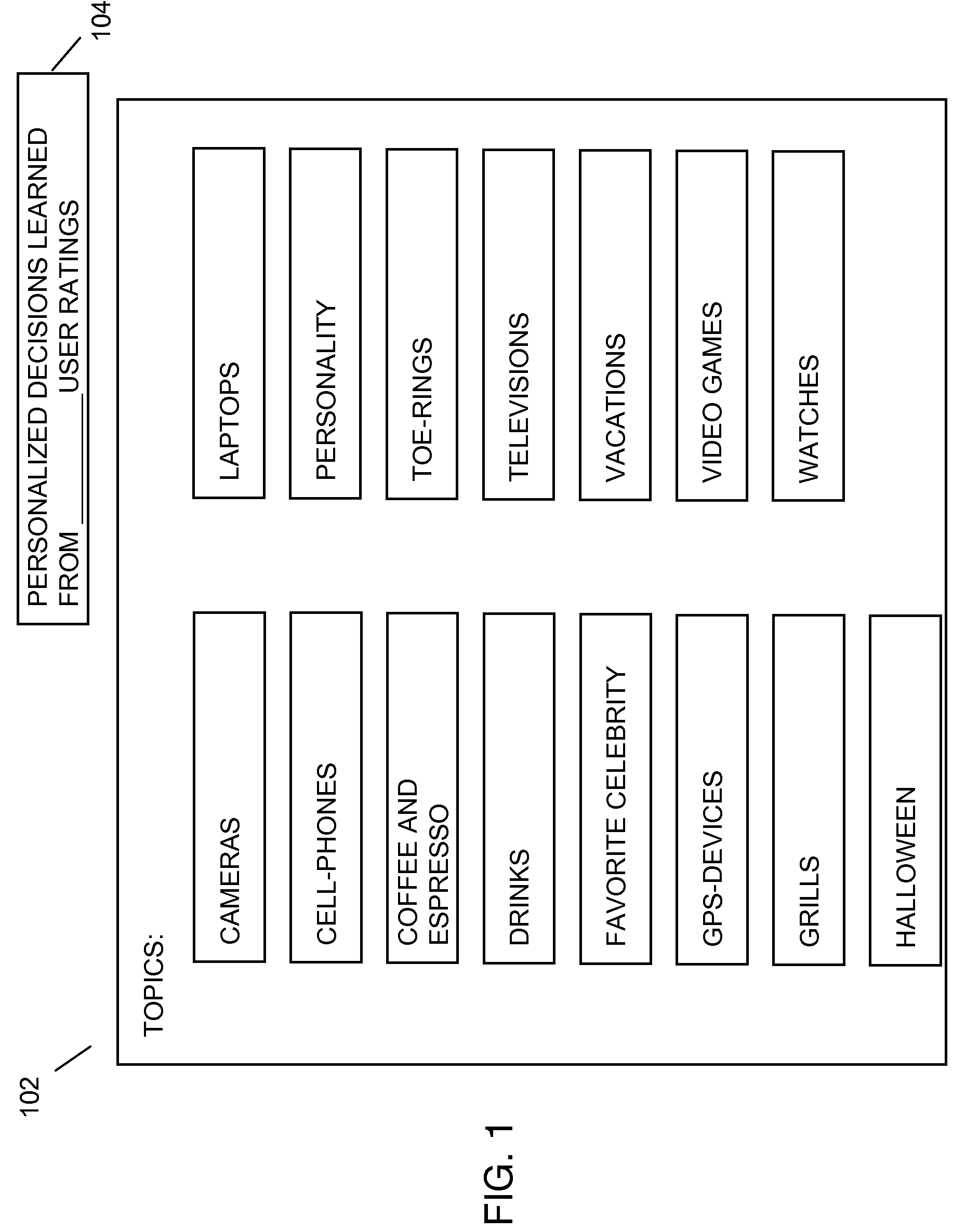Interactive machine learning advice facility
a machine learning and advice facility technology, applied in the field of collective knowledge systems, can solve the problems of affecting the quality of future questions and decisions provided by the machine learning facility, affecting requiring a long time to sort through, interpret and compare, so as to improve the quality improve the effect of future questions and decisions
- Summary
- Abstract
- Description
- Claims
- Application Information
AI Technical Summary
Benefits of technology
Problems solved by technology
Method used
Image
Examples
Embodiment Construction
[0035]The present invention may ask the user 1314 questions 1320 and based on the user's answers the system may offer a decision, such as a recommendation, a diagnosis, a conclusion, advice, and the like. Internally, the system may use machine learning to optimize which questions 1320 to ask and what decision 1310 to make at the end of the process. The system may learn through users giving feedback on the ultimate decision, whether the decision 1310 was helpful or not. Helpful solutions may get reinforced and associated with the questions 1320 and answers 1322 that were asked along the way. When a user 1314 says that a decision 1310 was helpful the system may remember which questions 1320 it asked, what the answer 1322 to each question 1320 was, and may associate these questions 1320 and answers 1322 with the ultimate decision. These associations may be the basis of the machine learning that learns over time which question 1320 to ask the next time a user 1314 comes to the system.
[0...
PUM
 Login to View More
Login to View More Abstract
Description
Claims
Application Information
 Login to View More
Login to View More - R&D
- Intellectual Property
- Life Sciences
- Materials
- Tech Scout
- Unparalleled Data Quality
- Higher Quality Content
- 60% Fewer Hallucinations
Browse by: Latest US Patents, China's latest patents, Technical Efficacy Thesaurus, Application Domain, Technology Topic, Popular Technical Reports.
© 2025 PatSnap. All rights reserved.Legal|Privacy policy|Modern Slavery Act Transparency Statement|Sitemap|About US| Contact US: help@patsnap.com



